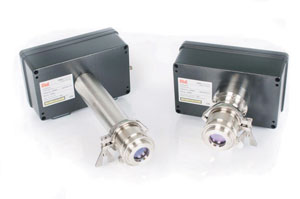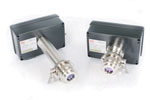NEO Monitors new generation mid-infrared sensors will help global industries better control emissions of nitrogen oxides (NOx) and sulfur oxides (SOx). The reduction of these gases are key to decrease environmental pollution and especially reduce acid rain.
 The LaserGasTM Q analyzers portfolio is launched following extensive research and Development at NEO: The analyzers are based on the well-established tunable laser absorption spectroscopy (TLAS) measurement technique and combine the longtime experience from the LaserGasTM II platform with new laser sources. Previously, mainly near-infrared lasers have been used in TLAS sensors. The advent of compact mid-infrared light sources like quantum cascade lasers (QCLs) and interband cascade lasers (ICLs) opened up new possibilities.
The LaserGasTM Q analyzers portfolio is launched following extensive research and Development at NEO: The analyzers are based on the well-established tunable laser absorption spectroscopy (TLAS) measurement technique and combine the longtime experience from the LaserGasTM II platform with new laser sources. Previously, mainly near-infrared lasers have been used in TLAS sensors. The advent of compact mid-infrared light sources like quantum cascade lasers (QCLs) and interband cascade lasers (ICLs) opened up new possibilities.
The TLAS measurement technique allows performing in-situ measurements so that results are more accurate at a faster response time. An important benefit for the customer is the fact that in-situ TLAS sensors require less maintenance than extractive systems. The objectives of LaserGasTM Q solutions are to introduce sensors for some of the most climate unfriendly gases there are:
- To support global industries become more compliant with governmental regulations, reduction of nitrogen oxides (NOx) and sulfur oxides (SOx) are imperative, said CEO at NEO Monitors, Ketil Gorm Paulsen
- Gases such as NOx and SOx are emitted from all kinds of industrial processes, and new regulations require more sensitive instruments. In-situ analyzers provide more accurate emission measurements and ensures better compliance with HSE-regulations, said Paulsen.

